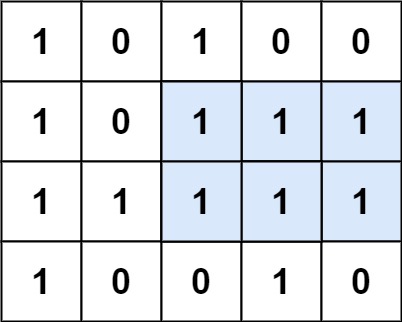13. Maximal Rectangle
Given a rows x cols binary matrix filled with 0's and 1's, find the largest rectangle containing only 1's and return its area.
Example 1:

Input: matrix = [["1","0","1","0","0"],["1","0","1","1","1"],["1","1","1","1","1"],["1","0","0","1","0"]]
Output: 6
Explanation: The maximal rectangle is shown in the above picture.Example 2:
Input: matrix = []
Output: 0
Example 3:
Input: matrix = [["0"]]
Output: 0
Example 4:
Input: matrix = [["1"]]
Output: 1
Example 5:
Input: matrix = [["0","0"]]
Output: 0Solution: (Using Stack)
Approach: Same as Largest Rectangle in a Histogram Problem Computing largest rectangle in each row
Time Complexity: O(n * m) Space Compexity: O(n + m)
Last updated
Was this helpful?